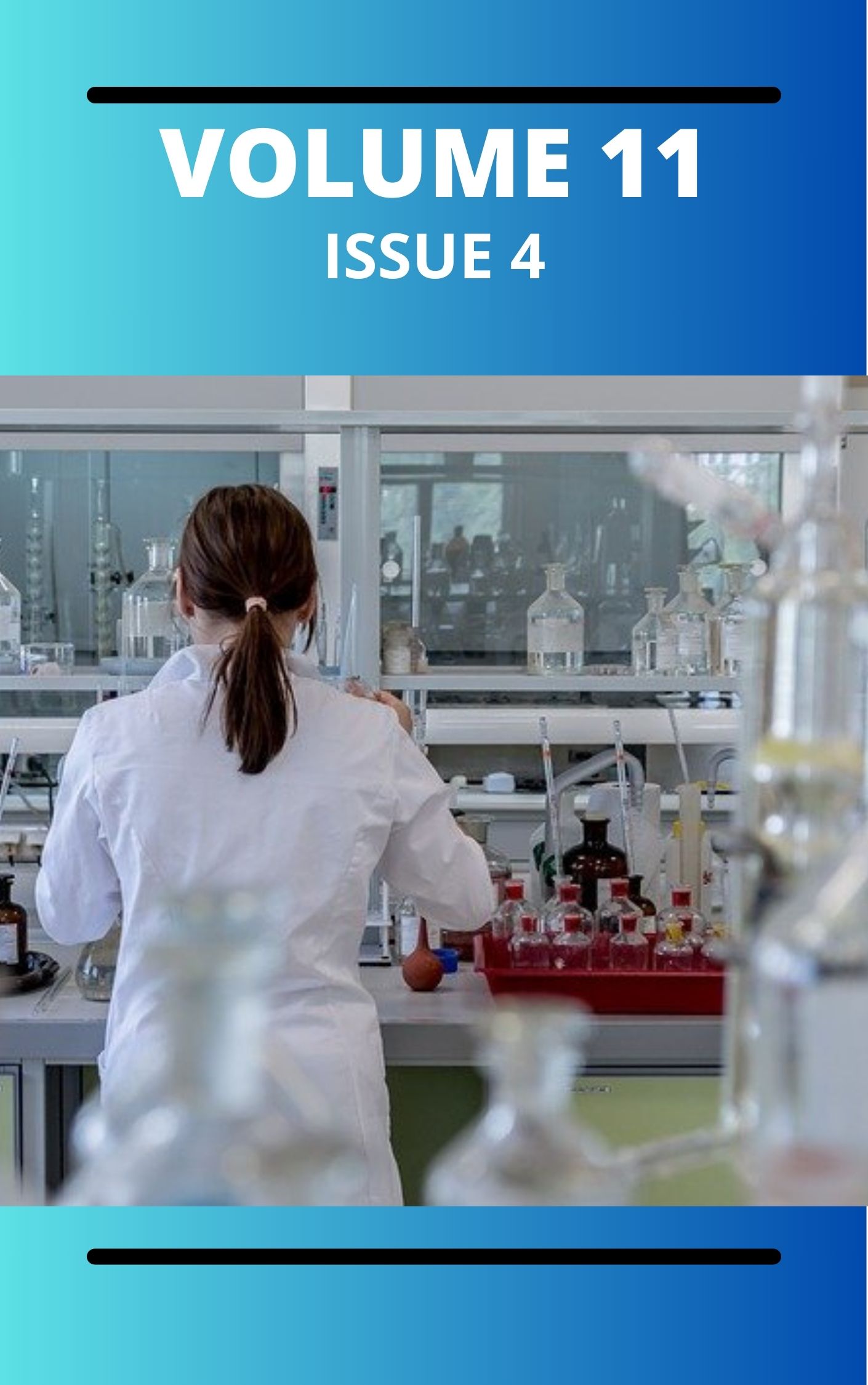Crystal Structure, in Silico Studies and Anti-diabetic Potentials of 3-e-(1,5-dimethyl-3-oxo-2-phenyl-2,3-dihydro-1h-pyrazol-4-yl)hyd -razinylidene]pentane-2,4-dione(hdpp)and its Cu(II) and Ni(II) complexes
DOI:
https://doi.org/10.4314/2cv4bb03Keywords:
Hydrazone, X- ray crystallography, Co(II), Ni(II), Cu(II) and Fe(III) complexes, In silico and antidiabetic studiesAbstract
The hydrazone, 3-E-[2-(1,5-Dimethyl-3-oxo-2-Phenyl-2,3-Dihydro-1h-Pyrazol-4-yl)Hydrazinylidene]Pentane-2,4-dione, HDPP was synthesized by coupling diazotized 4-aminoantipyrine with pentan-2,4-dione at < 5 0C. The Cu(II) and Ni(II) complexes were prepared by refluxing stoichiometric amounts of metal salts and HDPP in ethanol for 6 h at 60 0C. The ligand and complexes were characterized by UV-Vis, IR, NMR, and mass spectroscopies as well as by C, H, N, S elemental analysis, conductivity measurement, quantitative chloride determination and single crystal X-ray diffraction analysis. The compounds were screened in vitro for antibacterial activity against P. aeruginosa, S. aureus, Ecoli(Eco 6), E. coli(13), B. subtilis, S. pneumonia, P. mirabilis, S. intermedius and K. pneumoniae. The compounds were assayed for in silico molecular docking and in vivo anti-diabetic potentials. FTIR data showed shifts in ⱱ(C=O), ⱱ(N=H) and ⱱ(C=N) of the complexes implicating the involvement of these groups in complexation. Proton NMR shifts accounted for the methyl, phenyl and N-H protons of the ligand but indecipherable for the complexes due to paramagnetic effects. Conductivity values of HDPP and complexes showed the ligand and its complexes to be neutral. X-ray crystallographic data of HDPP show the ligand to have orthorhombic crystals with pbca unit cell a = 28.501(4) Å, α = 90°, b = 15.0494(19) Å, β = 90°; and c = 7.3234(9) Å, γ = 90° with Z=8. HDPP and its complexes exist in hydrazo form instead of azo form. It showed no activity against test organisms, but the complexes showed various degrees of sensitivities against the test bacterial strain at 10μg/cm3. Acute toxicity (LD50) tests showed that HDPP and [Cu(HDPP)2Cl2] were non-toxic. In silico studies proved them to be drug candidates for diabetes with good oral bioavailability. In vivo, antidiabetic tests showed HDPP and [Cu(HDPP)2Cl2] to reduce the blood level of diabetic rats to within 61 to 67% better than the control drug glibenclamide within 14 days of treatment.
Downloads
Published
Issue
Section
Most read articles by the same author(s)
- Uchechukwu Susan Oruma, Pius Oziri Ukoha, Collins U. Ibeji, Lawrence Nnamdi Obasi, Obinna C. Okpareke, Ebubechukwu N. Dim, Klaus Jurkschat, Ponnadurai Ramasami, Synthesis, Spectroscopic, Biological and DFT Studies of 2,4,6-Tris(4-Carboxyphenylimino-41-Formylphenoxy)-1,3,5-Triazine and its Trinuclear Dy(III) and Er(III) Salen Capped Complexes , Communication In Physical Sciences: Vol. 7 No. 3 (2021): VOLUME 7 ISSUE 3
- Uchechukwu Susan Oruma, Pius Oziri Ukoha, Lawrence Nnamdi Obasi, Synthesis, Characterization and Biological Studies of Trinuclear Ce(IV) Salen Capped Complex with 5-amino-2,4,6-tris(4-carboxybenzimino)-1,3-pyrimidine , Communication In Physical Sciences: Vol. 5 No. 3 (2020): VOLUME 5 ISSUE 3
Similar Articles
- Humphrey Sam Samuel , Emmanuel Edet Etim, John Paul Shinggu, Bulus Bako, Machine Learning in Thermochemistry: Unleashing Predictive Modelling for Enhanced Understanding of Chemical Systems , Communication In Physical Sciences: Vol. 11 No. 1 (2024): VOLUME 11 ISSUE 1
- Vincent Oseikhuemen Binitie, Ogaga Esharive, Solid mineral potential in the southern Benue Trough: A review , Communication In Physical Sciences: Vol. 11 No. 4 (2024): VOLUME 11 ISSUE 4
- Joy Nnenna Okolo, A Review of Machine and Deep Learning Approaches for Enhancing Cybersecurity and Privacy in the Internet of Devices , Communication In Physical Sciences: Vol. 9 No. 4 (2023): VOLUME 9 ISSUE 4
- Chisimkwuo John, Okoroafor Promise Izuchukwu, Amobi Chinenye Theresa, Application of Factor Analysis in the Modelling of Inflation Rate in Nigeria , Communication In Physical Sciences: Vol. 10 No. 2 (2023): VOLUME 10 ISSUE 2
- Edith.U. Omede, 2Optimization of Determinant Diagnostic Symptoms for Febrile Diseases using Genetic Algorithm , Communication In Physical Sciences: Vol. 8 No. 4 (2022): VOLUME 8 ISSUE 4
- Ovie Benedict Enivwenae, Determination of pH and Hydroquinone Concentration in Selected Bleaching Creams Used By Some Students Of Delta State University Abraka , Communication In Physical Sciences: Vol. 11 No. 2 (2024): VOLUME 11 ISSUE 2
- Hauwa Muhammad, Estimated Dietary Intake of Essential Trace Elements from Selected fruits and vegetables in Minna town, Nigeria , Communication In Physical Sciences: Vol. 12 No. 3 (2025): VOLUME 12 ISSUE 3
- Chidiogo Evelyn Ezechukwu, Ikimi Charles German, Evaluation of Nutritional and Phytochemical Profiles of Garcinia manni Oliv. Used as Chewing Ntick in Mbiama, River State , Communication In Physical Sciences: Vol. 11 No. 4 (2024): VOLUME 11 ISSUE 4
- Yunusa Idris, Effect of Reciprocal Constructivist Instructional Approach on Middle Basic Science Students’ Academic Achievement of Kaduna Education Zone, Kaduna State , Communication In Physical Sciences: Vol. 8 No. 2 (2022): VOLUME 8 ISSUE 2
- Humphrey Ibifubara, Hassan Saheed Ayobami, Erusiafe Nald Ese, Design And Implementation of Cost Effective SMS-Based Online Voting System for Credible election in Nigeria , Communication In Physical Sciences: Vol. 12 No. 2 (2025): VOLUME 12 ISSUE 2
You may also start an advanced similarity search for this article.




